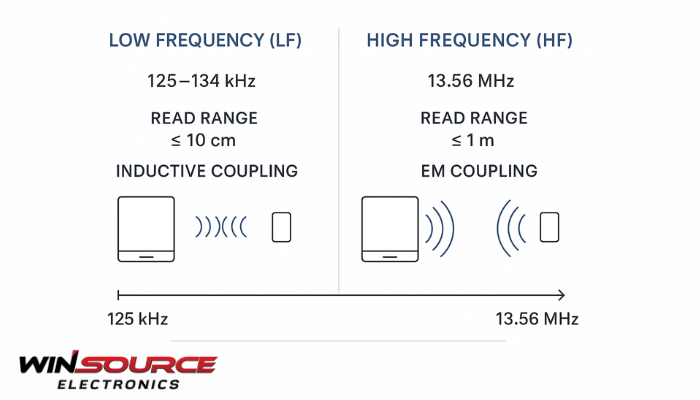
* Question
What are the characteristics of low-frequency (LF) and high-frequency (HF) RFID antennas?
* Answer
RFID (Radio Frequency Identification) antennas are designed to operate across different frequency ranges, each offering unique performance characteristics, communication distances, and application suitability. The two most common types — low-frequency (LF) and high-frequency (HF) antennas — differ significantly in their operating principles and use cases.
1. Operating Frequency and Range
LF RFID antennas typically operate at 125–134 kHz. Their signal range is relatively short, usually up to 10 cm, and they use inductive coupling for data transmission.
HF RFID antennas, on the other hand, operate at 13.56 MHz, offering a longer read range — up to 1 meter, depending on power and environment.
2. Signal Coupling and Sensitivity
- LF antennasrely on magnetic field coupling, which allows them to perform well in environments with metal, water, or other signal-absorbing materials.
- HF antennasuse electromagnetic coupling, making them faster in data transfer but more sensitive to interference from conductive materials.
3. Data Transfer Rate and Memory
- LF systemsgenerally have lower data transfer rates and are suited for simple identification tasks like access control or animal tagging.
- HF systemssupport higher data rates, larger memory capacities, and even encryption, making them ideal for applications such as contactless payment, smart cards, and library management.
4. Application Scenarios
Type | Typical Frequency | Read Range | Common Uses |
LF RFID | 125–134 kHz | Up to 10 cm | Livestock tracking, key fobs, industrial environments |
HF RFID | 13.56 MHz | Up to 1 m | Access cards, transit tickets, NFC devices, inventory management |
Summary
- LF RFID antennasare more robust in harsh environments but limited in range and speed.
- HF RFID antennasoffer greater speed and functionality, suited for data-rich applications but require controlled electromagnetic conditions.

COMMENTS